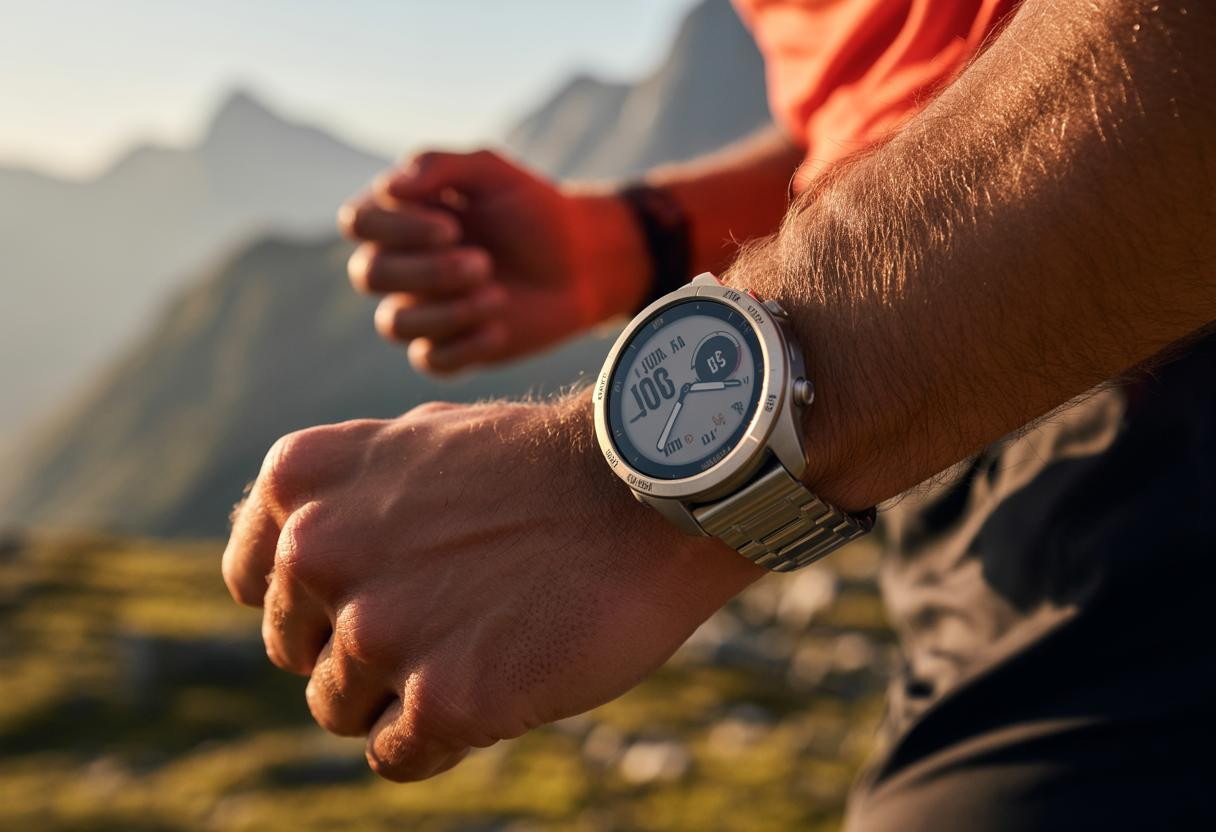The smartwatch wars just heated up with Garmin’s latest releases. The Forerunner 970 and 570 represent two distinct approaches to fitness tracking – one premium, one more accessible. But what exactly separates these two powerhouses, and which deserves your wrist space? Let’s dive into what makes each unique in this rapidly evolving wearable landscape that’s challenging even smart glasses for tech dominance.
Premium materials: The luxury difference
The Forerunner 970 immediately distinguishes itself with premium materials – a titanium bezel and sapphire crystal lens that scream durability. Meanwhile, the 570 opts for a more standard build with Corning Gorilla Glass 3, making it like choosing between a luxury SUV and a reliable sedan – both will get you there, but one does it with more style.
“The titanium construction isn’t just about aesthetics,” says Taylor Johnson, fitness technology analyst. “It provides substantially better durability for athletes pushing their limits in extreme conditions, justifying part of that $200 price difference.”
Heart rate innovation that rivals medical devices
Both watches feature Garmin’s newest Elevate Gen5 optical heart rate sensor, but the 970 takes health monitoring up a notch with on-demand ECG capabilities. This feature alone makes it a serious contender against devices like the Ray-Ban Meta glasses in the health tech space.
Battery life that doesn’t quit
The 970 delivers an impressive 15-day battery life in smartwatch mode, while the 570 offers a respectable 11 days. Like Sony’s new phone battery technology, Garmin has managed to improve performance without increasing size.
“What’s remarkable is how Garmin maintains battery efficiency while adding power-hungry features like AMOLED displays and always-on heart rate monitoring,” notes Maria Chen, endurance coach and tech reviewer.
Training features that make or break your decision
The 970’s advanced features truly separate these devices:
- Running Economy and Step Speed Loss metrics
- Triathlon-specific coaching
- 15 additional sport profiles
- Enhanced mapping capabilities
The 570, while impressive, offers a more streamlined experience focused on essential metrics. Think of it as the difference between having a personal coach versus a quality training plan – both effective, but one more comprehensive.
Smart features catching up to dedicated headphones
Both watches now feature built-in speakers and microphones for calls, putting them in competition with devices like high-end noise-canceling headphones for quick conversations. They’re like Swiss Army knives that keep adding tools without sacrificing their core purpose.
Price difference: Justifiable splurge?
At $750, the 970 represents a significant investment compared to the $549 570. Consider these factors when deciding:
- Advanced training metrics necessity
- Importance of premium materials
- ECG functionality value to you
- Long-term durability considerations
Which should you choose?
The 570 delivers exceptional value for recreational athletes and fitness enthusiasts who want comprehensive tracking without breaking the bank. The 970 is for dedicated athletes seeking every possible training advantage and premium construction, similar to how audiophiles might choose Sony’s premium headphones for the ultimate sound experience.
What’s your training style, and how might it evolve? The answer likely reveals which Forerunner belongs on your wrist. Both deliver Garmin’s renowned reliability, just wrapped in different packages designed for different journeys. Your perfect match awaits – it’s just a matter of knowing which path you’re on.
